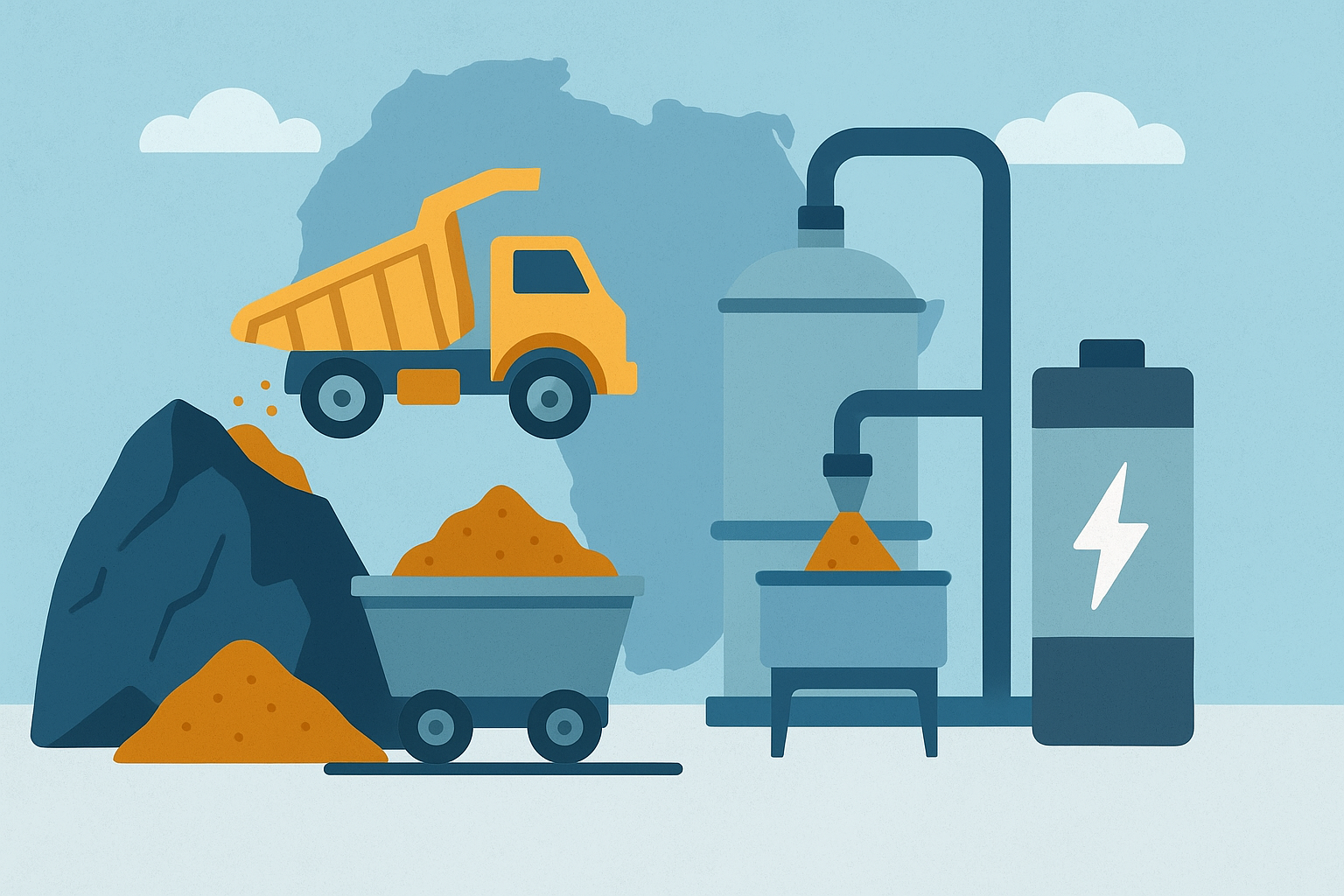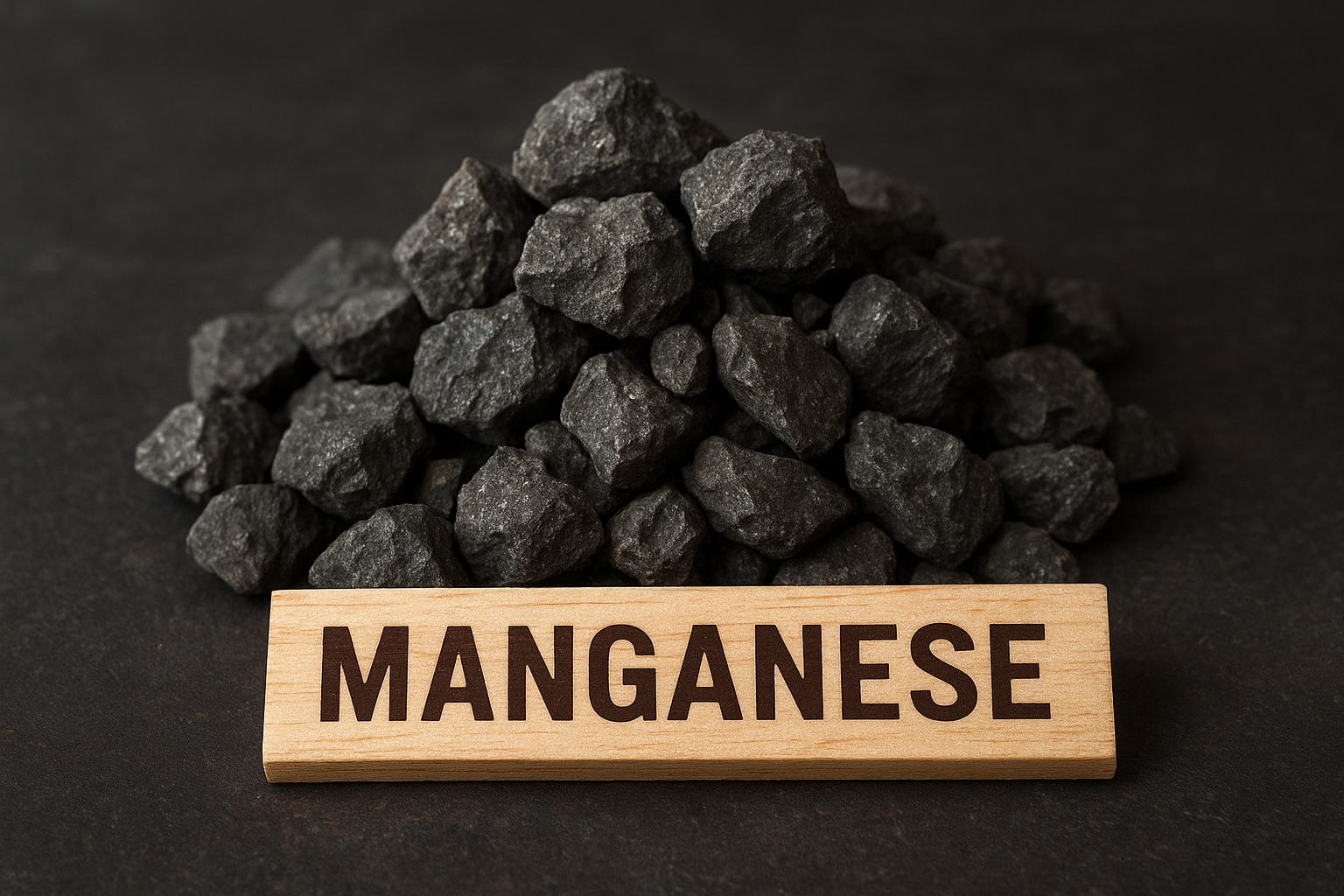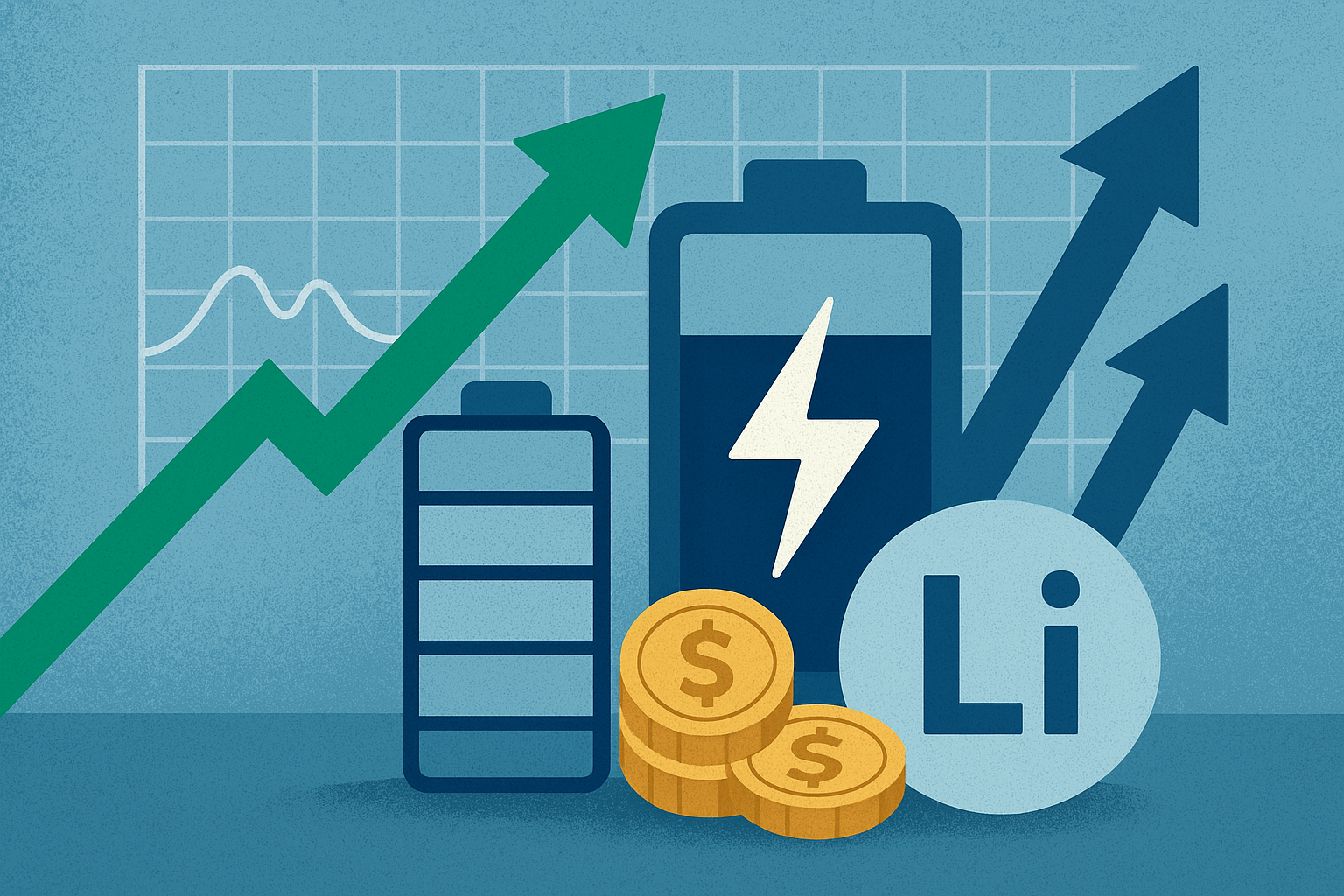As the global race for energy transition materials accelerates, manganese — often overshadowed by lithium and nickel — is quietly emerging as a cornerstone of next-generation battery technology. In a development that could reshape regional supply chains, a Johannesburg pilot plant has successfully processed locally mined manganese into battery-grade material, proving that high-purity beneficiation is achievable on African soil.
For investors tracking the evolution of the EV and battery-materials sector, this isn’t just a milestone in metallurgy — it’s a signal that value-added processing in resource-rich regions could soon rival traditional export-based models.
Africa’s Leap Toward Downstream Processing
According to a report from DiscoveryAlert, the Johannesburg demonstration plant achieved high-purity conversion of manganese ore suitable for use in lithium-ion and sodium-ion batteries — a breakthrough that could strengthen Africa’s role in the global clean-energy supply chain. Historically, South Africa — the world’s second-largest manganese producer after China — has exported much of its ore for overseas refinement.
However, mounting geopolitical pressure, supply-chain fragility, and the push for localized beneficiation are reshaping the playbook. With this successful pilot, industry experts suggest the region could retain more economic value by processing raw materials domestically before exporting finished battery inputs to European and Asian markets.
Bloomberg and Reuters have both highlighted a growing trend among African nations to adopt “mine-to-market” strategies — mirroring Indonesia’s nickel policy — aimed at attracting foreign capital into local processing infrastructure. If South Africa follows this model, it could emerge as a key supplier of battery-grade manganese sulfate (HPMSM), essential for cathode production in EV batteries.
Why This Matters for Investors
From an investment perspective, the success of this demonstration plant is not just technological — it’s strategic. Demand for high-purity manganese sulfate (HPMSM) is projected by Benchmark Mineral Intelligence to grow nearly five-fold by 2030, driven by EV adoption and energy storage systems.
Yet, the market remains supply-constrained. Currently, over 90% of global HPMSM production is concentrated in China, according to the International Energy Agency (IEA). This geographic imbalance poses risks for Western automakers seeking diversified, ESG-aligned supply chains.
A credible, regionally integrated beneficiation operation in South Africa could help fill that gap — opening opportunities for offtake deals, joint ventures, and strategic partnerships with battery manufacturers and automakers.
Industry and Policy Momentum
Government support may play a decisive role in scaling projects like this. South Africa’s Department of Mineral Resources and Energy has been vocal about encouraging beneficiation, while multilateral agencies such as the African Development Bank (AfDB) and the World Bank have indicated interest in financing critical-minerals infrastructure that aligns with global decarbonization goals.
Meanwhile, global majors are watching. Firms such as South32 ($S32.AX) and African Rainbow Minerals ($ARI.JO) — both active in the manganese space — could benefit from downstream synergies if local HPMSM processing gains traction.
Market analysts from McKinsey & Company have also pointed out that “critical-mineral independence” is becoming a key investment theme, with vertically integrated projects often commanding valuation premiums of up to 25–30% compared to raw-material producers.
Future Trends to Watch
1. Commercial Scaling:
Moving from pilot to commercial production remains a challenge. Capital intensity, energy costs, and technological optimization will determine viability. Watch for announcements regarding scale-up investment, debt financing, or offtake agreements — potential catalysts for early-stage investors.
2. Strategic Partnerships:
Expect growing collaboration between African processors and European or U.S. battery manufacturers seeking to derisk supply chains. Offtake contracts or minority stakes in such ventures could indicate long-term commitment from the EV sector.
3. ESG and Green Credentialing:
With the EU’s Critical Raw Materials Act emphasizing sustainable sourcing, projects demonstrating low-carbon beneficiation could command premium pricing and easier access to institutional capital.
Key Investment Insight
The emergence of battery-grade manganese production in South Africa signals a pivotal shift in how value is captured along the critical-minerals supply chain. Companies that can leverage clean-technology beneficiation — particularly those integrating renewable energy or low-emission processing — stand to gain early-mover advantages in a tightening global market.
However, investors should weigh the scaling risk and capital expenditure associated with moving from pilot to commercial operations. Monitoring follow-on investment rounds, technology partnerships, and government policy updates will be essential for identifying viable long-term opportunities.
Stay Ahead of the Curve
As the global clean-energy race intensifies, developments like Johannesburg’s manganese pilot project underscore how Africa’s mineral wealth is evolving into strategic energy-transition capital. For timely insights, trend analysis, and actionable investment intelligence across mining and critical minerals, follow ExplorationStocks.com — your trusted source for investor news that moves markets.






